Excerpts from Jim Conrad's
Naturalist Newsletter
entry dated May 21, 2022, notes from a camping trip among hills about 7kms ENE of Tequisquiapan, Querétaro state, MÉXICO
elevation about 2020m (6700 ft), near N20.57°, W99.85°
ANGLEWING PRIMROSE-WILLOW
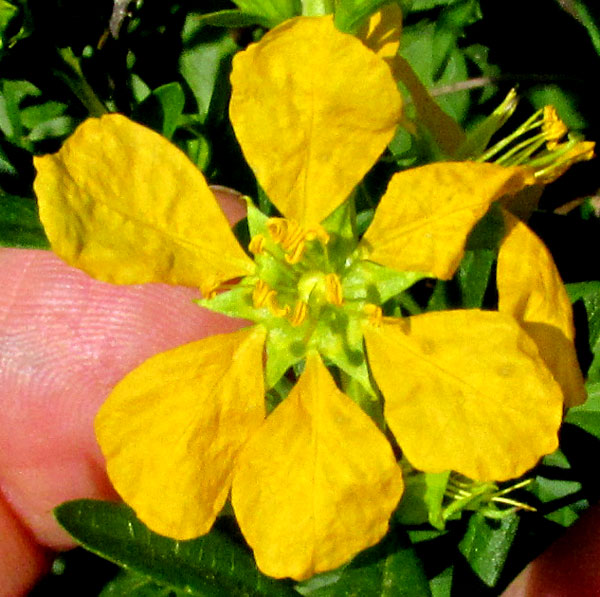
Here at the end of an especially dry dry-season the landscape is mostly gray and brown, except in those rare spots at the bases of cliffs and the heads of canyons where spring water seeps to the surface. In such locations a small but lush and green oasis forms, where all through the day birds and other animals come to drink, and plant species turn up not found out in the sunbaked scrub. One of those species, in a water-saturated low spot below a cliff, was a semi-woody-based, densely branching bush about shoulder high bearing flowers like the one shown above. Note that the flower has six petals and sepals.
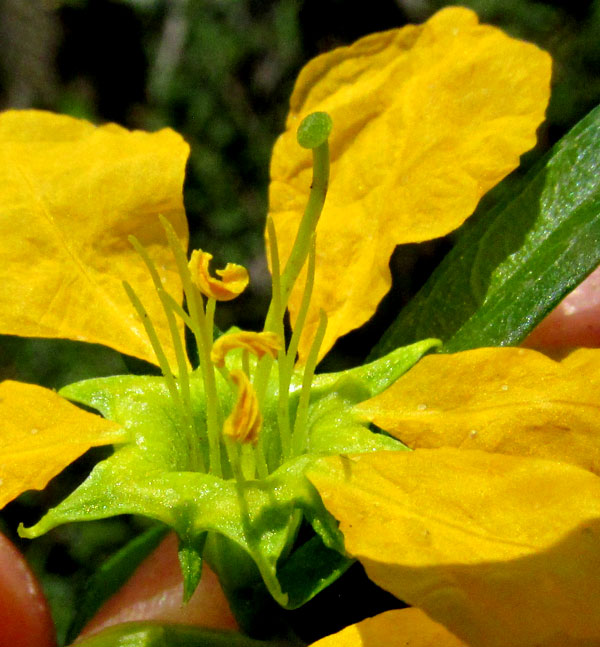
The above close-up gives a good view of the flower's interior, which includes some surprisingly twisty anthers. You can also see that the leaf at the right is perfectly hairless. Here's a better look at the leaves, still hairless:
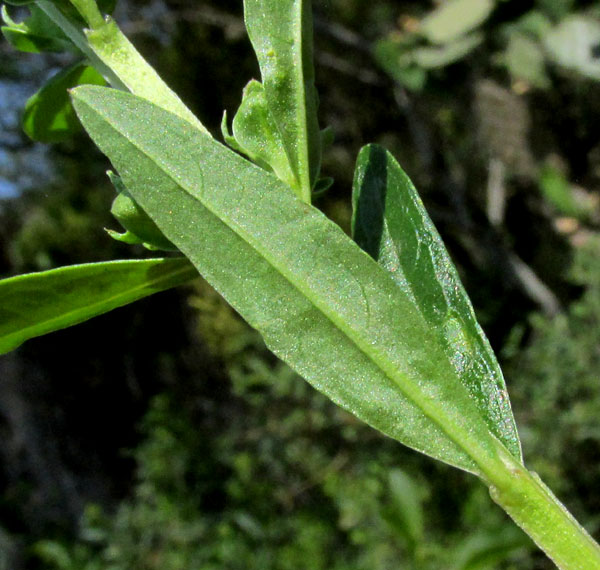
At the above picture's lower-right corner, notice how the leaf margins at its base continue onto the stem as pale "wings." A better grasp of what stem wings on a squarish stem looks like is shown below:
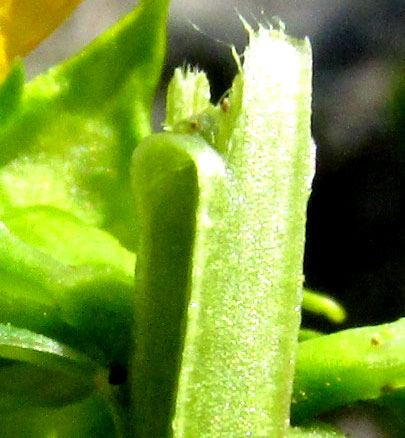
Finally, here's a view of the whole semi-woody-based, shoulder-high plant:
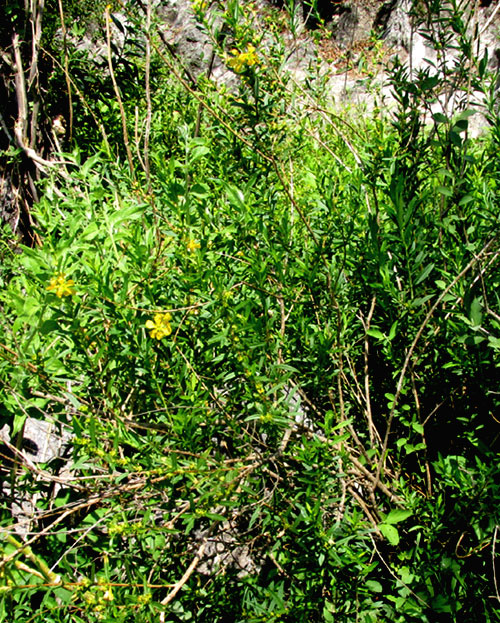
Any wildflower fancier will recognize this plant as what's often called a primrose-willow, or sometimes seedbox, because of the boxy-looking fruit. It's the genus Ludwigia, in the Evening Primrose Family, the Onagraceae. Ludwigia is home to about 82 mostly subtropical species scattered across the world. They specialize in wet habitats, with a few species being fully aquatic.
Meeting this individual plant has been a special pleasure for me. That's because it doesn't nicely fit any of the species descriptions in the various treatments I can find on the Internet.
Mostly because our plant produces flowers with five or six petals and sepals on a tall, much-branched bush with a semi-woody base, it seems to best fit the concept of the Anglewing Primrose-willow, LUDWIGIA LEPTOCARPA. However, most authorities describe that species' stems as round to squared but not winged, and the vegetative parts are variously hairy. Pictures often display very hairy parts.
In most treatments, if a primrose-willow possesses winged, squared stems -- like our plant -- it's automatically identified as the Wingleaf Primrose-willow, Ludwigia decurrens. However, nearly all literature describes that species' flowers as bearing only four or sometimes five petals, though the USGS "Plants of Louisiana" page, while showing flowers with four petals, describes 4 to 7 petals. This species is mostly self-pollinating
There's another 4-petaled species, Ludwigia erecta, which is almost identical in physical appearance to Ludwigia decurrens and often grows with it, but it only rarely has winged stems, produces smaller flowers and fruits, and is not particularly self-pollinating.
Finally, at this writing, the authoritative Flora of North America, while including our Anglewing species, Ludwigia leptocarpa, in its key, no longer provides a page for the species, though pages for the other species remain, and all sources agree that it commonly occurs in North America as well as here in Mexico.
Though most Ludwigia species display smaller regional distributions, the above three mentioned species are very widely distributed on various continents, and occupy a wide variety of wet habitats.
For a long time I've suspected that the traditional species concept, including Linnaeus's binomial system with names consisting of the genus and species, simply can't provide neat fits for many organisms because Nature doesn't evolve her species with the notion of keeping everything neatly compartmentalized.
Plant taxonomy -- and everything else in the University -- is like the field of physics. At first Newton's ideas about reality seemed capable of explaining how everything in Nature functions. But then relativity and quantum mechanics showed that Newtonian physics can only be trusted in matters more or less at the human scale, with things we can see and feel directly. But the great minds of quantum mechanics could see that there was something beyond even quantum mechanics. Niels Bohr ran up against what he called the uncertainty principle; David Bohm had his hidden variables.
And don't forget that we living things on Earth are expressions of our genes, which are clusters of molecules composed of atoms not at all bound to behave according to Newtonian physics, or even to quantum theory. Our genes blossom in a Universe of uncertain and hidden features.
Maybe our plant, which most seems to be an unusually large, semi-woody-based Anglewing Primrose-willow, will in the end really fit into someone's pigeonhole. However, at least for me personally, that one hairless plant with its stem wings and 6-petaled blossoms has been like a lone bell chiming during a Zen meditation.
See the beauty in uncertainty. Relish the hidden. Delight in the bush with six flower petals as it is when it is where it is.